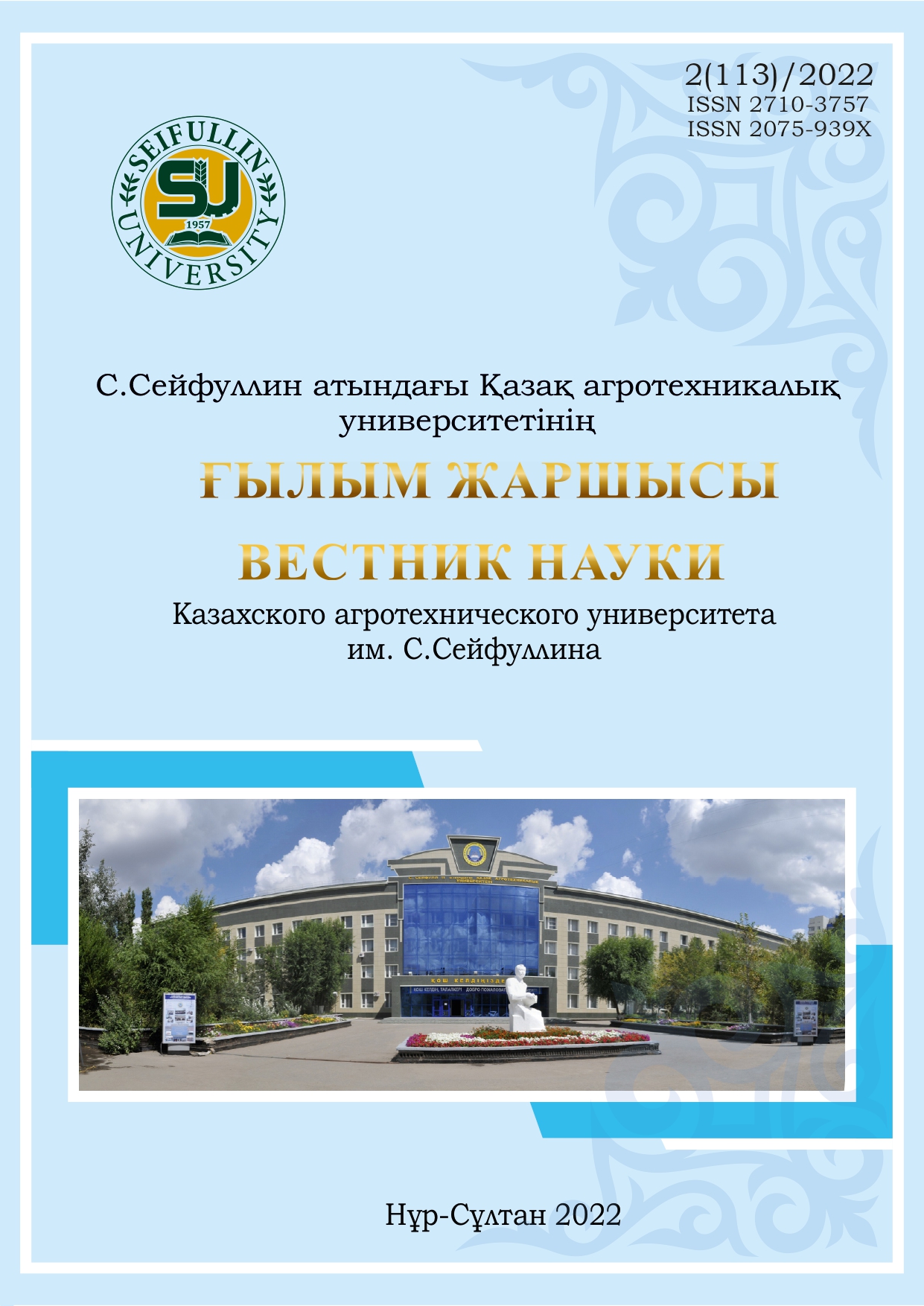ECOLOGICAL TESTING OF FOREIGN VARIETIES OF COTTON IN MIDDLE SALT CONDITIONS
DOI:
https://doi.org/10.51452/kazatu.2022.2(113).1031Keywords:
Cotton; foreign varieties; fiber length; fiber exit; growing season; harvest; mi-cronaire.Abstract
In 2018-2020, we laid out experiments to test 10 foreign varieties of medium staple cotton. Of the sown varieties of foreign selection, 7 varieties from China series 16-01, 16-02, 16-03, 16-04, 16-07, 16-08, 16-09; 1 variety from Israel Gedera; 2 varieties from the Republic of Uzbekistan Bukhara 6, An Bayavut, a domestic variety entered in the register of approved varieties in the Turkestan region M-4007 was taken as a control variety. In the process of testing varieties of foreign selection, the following were studied: the length of the growing season, the number of days from sowing to 50% ripening; productivity from 1 hectare; average weight of one box; fiber exit; fiber length.
When testing 10 varieties of cotton of foreign selection in comparison with the standard variety M-4007, in comparison with the growing season, 2 varieties of Uzbek selection Bukhara - 6 -124 days, An - Bayavut - 125 days were identified. By productivity, the varieties Bukhara - 6, 16-07, An - Bayavut were noted. Data processing on the average weight of one box showed that the excess over the standard variety by 0.1-0.3 grams was noted in 5 varieties Bukhara-6, An-Bayavut, 16-08, 16-07, 16-04. varieties Bukhara-6 - 44.5 c/ha, 16-07 - 44.6 c/ha, An-Bayavut - 45.6 c/ha were noted.
The fiber yield showed that the highest rates were noted in An-Bayavut varieties - 39.8%, Gedera - 38.9%.
The length of the fiber showed that the Bukhara grade was at the level of the standard, and the tested steel grades were inferior in this indicator to the standard grade M-4007.
All indicators of the tested varieties of foreign selection are good for medium staple cotton species. According to certain characteristics, variety samples can increase their potential with further refinement in the breeding process.

